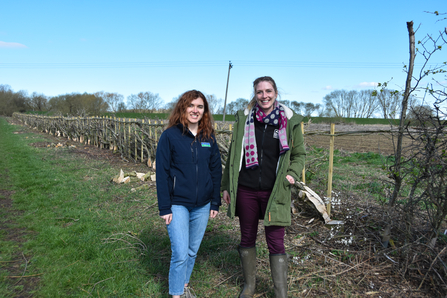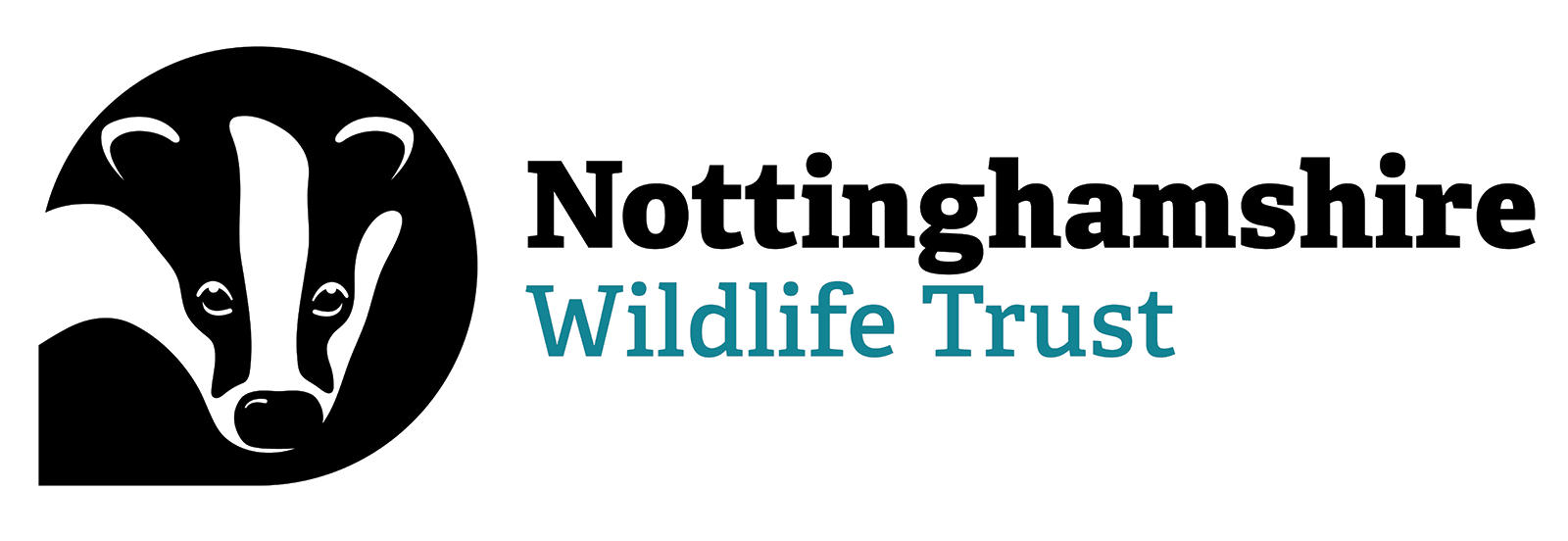Hedgerows
Replanting native species in missing hedgerows creates habitat connectivity - highways for wildlife.
Managing hedges by laying them strengthens the wildlife corridor and also provides better habitats for species creating an enhanced biodiversity.

Left to right Bryony Harrison of Severn Trent with Lisa Channing Nottinghamshire Wildlife Trust alongside hedge laying at landowners Pollybell in North Nottinghamshire.
Hedges provide song posts, shelter and nesting opportunities for both woodland and farmland birds, while nectar, berries, nuts and leaves provide food for an assortment of invertebrates, mammals and birds. In addition to providing excellent wildlife habitat, hedges can help reduce soil erosion and water run-off on arable land.
Many remaining hedges have been too harshly trimmed, neglected or affected by drifting agricultural chemicals ('spray drift').
One of the best way to manage hedges for wildlife is to lay them – left unmanaged they turn into lines of trees, while hard annual trimming results in thin, gappy hedges that support little but the occasional dunnock or whitethroat. Hedge laying is best carried out in late winter, before the nesting season and when most berries have been eaten.
Hedges should be cut sympathetically and as late in the season as possible.
Funded by

